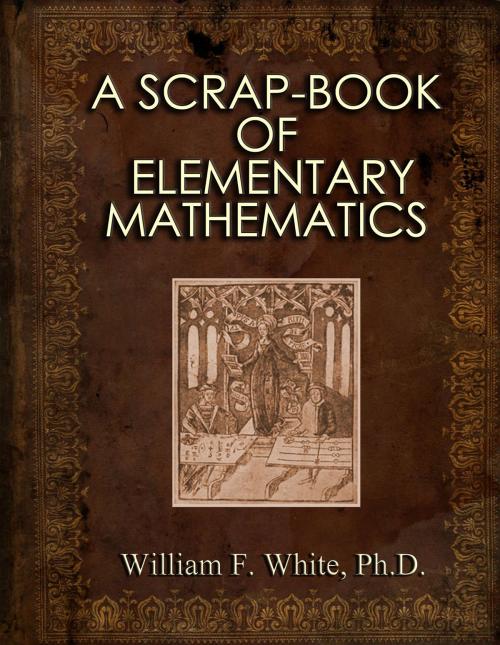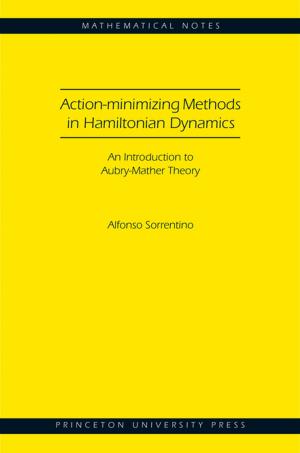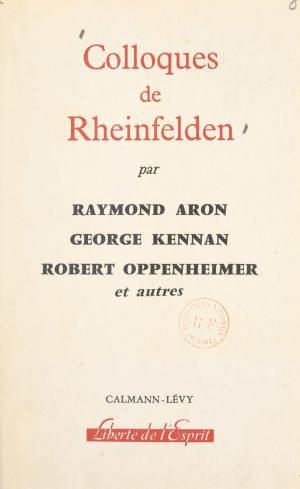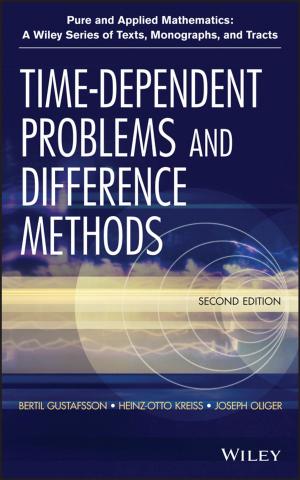| Author: | William F. White, Ph.D. | ISBN: | 1230000119008 |
| Publisher: | W.F. White | Publication: | April 3, 2013 |
| Imprint: | Language: | English |
| Author: | William F. White, Ph.D. |
| ISBN: | 1230000119008 |
| Publisher: | W.F. White |
| Publication: | April 3, 2013 |
| Imprint: | |
| Language: | English |
Mathematics is the language of definiteness, the necessary vocabulary of those who know, hence the intimate connection between mathematics and science.
The tendency to select the problems and illustrations of mathematics mostly from the scientific, commercial and industrial activities of to-day, is one with which the writer is in accord. It may seem that in the following pages puzzles have too largely taken the place of problems.
But this is not a text-book. Moreover, amusement is one of the fields of applied mathematics.
Contents:
• The two systems of numeration of large numbers
• Billion
• Repeating products
• Multiplication at sight: a new trick with an old principle
• A repeating table
• A few numerical curiosities
• A curious property of 37 and 41
• Numbers differing from their logarithms of the decimal point
• Fourier’s method of division
• Nine
• Familiar tricks based on literal arithmetic
• General test of divisibility
• Test of divisibility by 7
• Test of divisibility by 7, 11, and 13
• Misc notes on number
• The theory of numbers
• Fermat’s last theorem
• Wilson’s theorem
• Formulas for prime numbers
• A Chinese criterion for prime numbers
• Are there more than one set of prime factors of a number?
• Asymptotic laws
• Growth of the concept of number
• Some results of permutation problems
• Tables
• Some long numbers
• How may a particular number arise?
• Numbers arising from measurement
• Decimals as indexes of degree of accuracy of measure
• Some applications
• Compound interest
• If the Indians hadn’t spent the $24
• Decimal separatrixes
• Present trends in arithmetic
• Multiplication and division of decimals
• Arithmetic in the Renaissance
• Napier’s rods and other mechanical aids to calculation
• Axioms in elementary algebra
• Do the axioms apply to equations?
• Checking the solution of an equation
• Algebraic fallacies
• Two highest common factors
• Positive and negative numbers
• Visual representation of complex numbers
• Illustrations of the law of signs in algebraic multiplication
• A geometric illustration
• A more general form of the law of signs
• Multiplication as a proportion
• Gradual generalization of multiplication
• Exponents
• An exponential equation
• Two negative conclusions reached in the nineteenth century
• The three parallel postulates illustrated
• In trigonometry
• Parallels meet at infinity
• The three postulates again
• Geometric puzzles
• Another puzzle
• Paradromic rings
• Division of plane into regular polygons
• A homemade leveling device
• “Rope stretchers
• The three famous problems of antiquity
• The circle-squarer’s paradox
• The instruments that are postulated
• The triangle and its circles
• Collinearity of centers
• The nine-point circle
• Linkages and straight-line motion
• The four-colors theorem
• Parallelogram of forces
• A question of fourth dimension by analogy
• Symmetry illustrated by paper folding
• Apparatus to illustrate line values of trigonometric functions
• “Sine"
• Growth of the philosophy of the calculus
• Some illustrations of limits
• Law of commutation
• The mathematical treatment of statistics
• Mathematical symbols
• Beginnings of mathematics on the Nile
• A few surprising facts in the history of mathematics
• Quotations on mathematics
• Autographs of mathematicians
• Bridges and isles, figure tracing, unicursal signatures, labyrinths
• Unicursal signatures
• Labyrinths
• The number of the beast
• Magic squares
• Domino magic squares
• Magic hexagons
• The square of Gotham
• A mathematical game-puzzle
• Puzzle of the camels
• Only one dimension on Wall street
• The apple women
• A few catch questions
• Seven-counters game
• To determine direction by a watch
• Mathematical advice to a building committee
• The golden age of mathematics
• The movement to make mathematics teaching more concrete
• The mathematical recitation as an exercise in public speaking
• The nature of mathematical reasoning
• Alice in the wonderland of mathematics
Mathematics is the language of definiteness, the necessary vocabulary of those who know, hence the intimate connection between mathematics and science.
The tendency to select the problems and illustrations of mathematics mostly from the scientific, commercial and industrial activities of to-day, is one with which the writer is in accord. It may seem that in the following pages puzzles have too largely taken the place of problems.
But this is not a text-book. Moreover, amusement is one of the fields of applied mathematics.
Contents:
• The two systems of numeration of large numbers
• Billion
• Repeating products
• Multiplication at sight: a new trick with an old principle
• A repeating table
• A few numerical curiosities
• A curious property of 37 and 41
• Numbers differing from their logarithms of the decimal point
• Fourier’s method of division
• Nine
• Familiar tricks based on literal arithmetic
• General test of divisibility
• Test of divisibility by 7
• Test of divisibility by 7, 11, and 13
• Misc notes on number
• The theory of numbers
• Fermat’s last theorem
• Wilson’s theorem
• Formulas for prime numbers
• A Chinese criterion for prime numbers
• Are there more than one set of prime factors of a number?
• Asymptotic laws
• Growth of the concept of number
• Some results of permutation problems
• Tables
• Some long numbers
• How may a particular number arise?
• Numbers arising from measurement
• Decimals as indexes of degree of accuracy of measure
• Some applications
• Compound interest
• If the Indians hadn’t spent the $24
• Decimal separatrixes
• Present trends in arithmetic
• Multiplication and division of decimals
• Arithmetic in the Renaissance
• Napier’s rods and other mechanical aids to calculation
• Axioms in elementary algebra
• Do the axioms apply to equations?
• Checking the solution of an equation
• Algebraic fallacies
• Two highest common factors
• Positive and negative numbers
• Visual representation of complex numbers
• Illustrations of the law of signs in algebraic multiplication
• A geometric illustration
• A more general form of the law of signs
• Multiplication as a proportion
• Gradual generalization of multiplication
• Exponents
• An exponential equation
• Two negative conclusions reached in the nineteenth century
• The three parallel postulates illustrated
• In trigonometry
• Parallels meet at infinity
• The three postulates again
• Geometric puzzles
• Another puzzle
• Paradromic rings
• Division of plane into regular polygons
• A homemade leveling device
• “Rope stretchers
• The three famous problems of antiquity
• The circle-squarer’s paradox
• The instruments that are postulated
• The triangle and its circles
• Collinearity of centers
• The nine-point circle
• Linkages and straight-line motion
• The four-colors theorem
• Parallelogram of forces
• A question of fourth dimension by analogy
• Symmetry illustrated by paper folding
• Apparatus to illustrate line values of trigonometric functions
• “Sine"
• Growth of the philosophy of the calculus
• Some illustrations of limits
• Law of commutation
• The mathematical treatment of statistics
• Mathematical symbols
• Beginnings of mathematics on the Nile
• A few surprising facts in the history of mathematics
• Quotations on mathematics
• Autographs of mathematicians
• Bridges and isles, figure tracing, unicursal signatures, labyrinths
• Unicursal signatures
• Labyrinths
• The number of the beast
• Magic squares
• Domino magic squares
• Magic hexagons
• The square of Gotham
• A mathematical game-puzzle
• Puzzle of the camels
• Only one dimension on Wall street
• The apple women
• A few catch questions
• Seven-counters game
• To determine direction by a watch
• Mathematical advice to a building committee
• The golden age of mathematics
• The movement to make mathematics teaching more concrete
• The mathematical recitation as an exercise in public speaking
• The nature of mathematical reasoning
• Alice in the wonderland of mathematics















